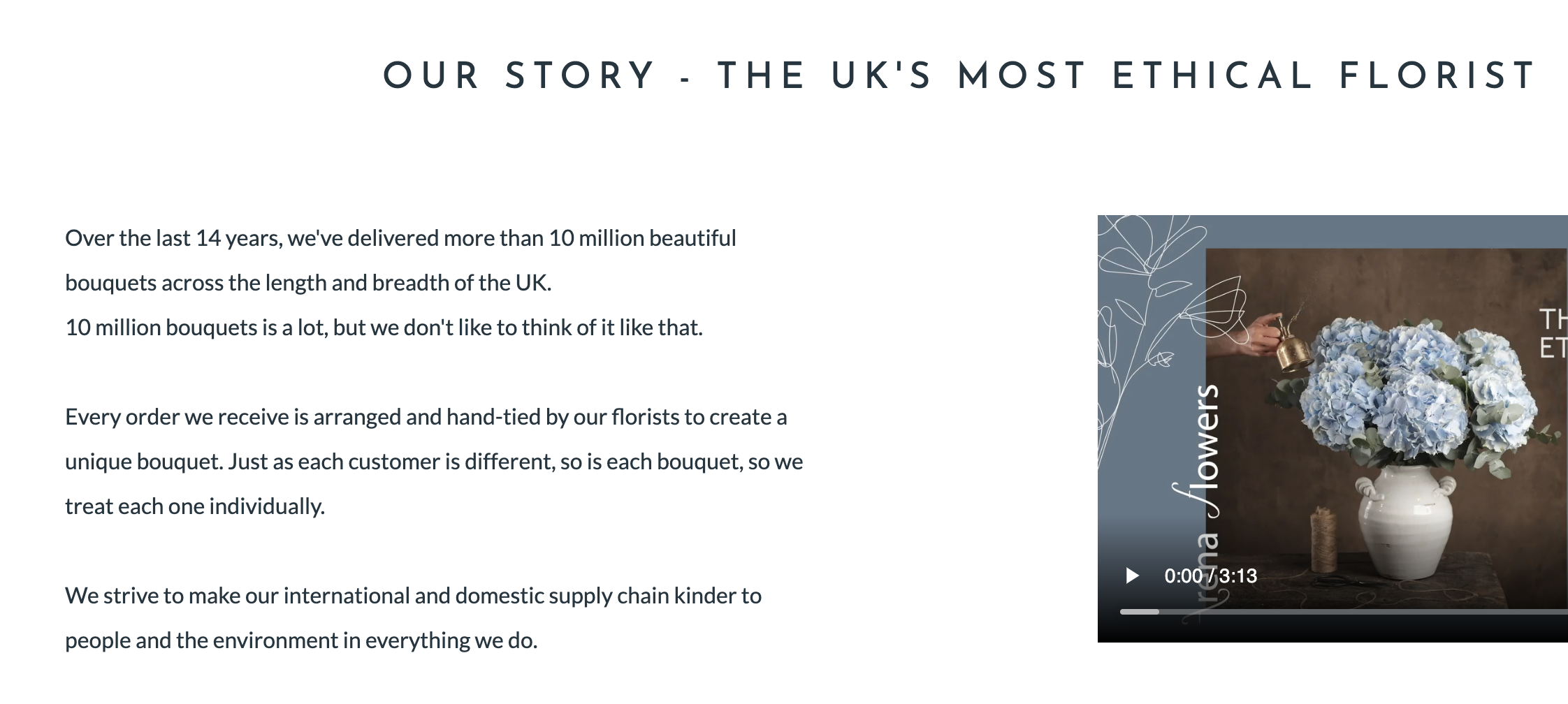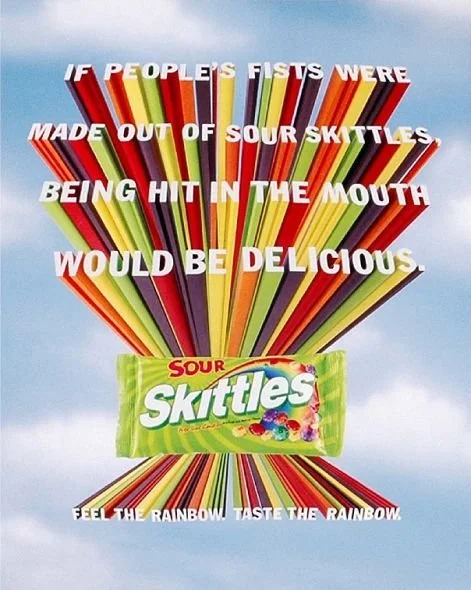Is tone of voice just a load of wishy washy nonsense?
A few months ago, someone got in touch and asked if I would write them some tone of voice guidelines, as well as deliver some tone of voice training. I said yes, obviously. But when I told them how much that would cost, they replied by saying: “What exactly are we getting for that money ? Isn’t tone of voice just a load of wishy washy nonsense? We just want a one pager, really.”
Now, after time has passed, I am finally calm enough to talk about it.
This blog will show you the value of a good tone of voice, as well as how tone of voice guidelines can play a crucial part in your brand’s success.
A tone of voice is about as wishy washy as the foundations of your house
You ever tried building a house? Me neither, but I imagine it’s hard. It’ll be even harder if you don’t first dig down into the ground and put loads of concrete and steel rods down there (is that how they do foundations? I don’t know, I’ve never built a house.) The foundations are what makes your house strong, giving you the structure to eat, sleep, rave and repeat in. Without them, your house would eventually topple over, and you’d die in a pile of bricks and soft furnishings.
Before I risk overdoing this metaphor, your tone of voice is the same. It’s the thing your whole brand should be built on, and if it’s good, it can give you a platform from which to thrive.
A tone of voice gives your brand three key things:
Trust
Identity
Standout
Here’s how they all work, written in my own unique tone of voice, which means you can trust every word I say.
How a tone of voice builds trust
Trust might not be the first thing you think of when it comes to tone of voice, so I’m going to explain why it should be by painting a beautiful picture with words. Trust in a brand comes from consistency - you see what you expect to see, when you expect to see it. So for example, if you follow a brand on social media and they speak one way, you’d expect them to speak the same way on their website. If you’re going through an order form, you’d expect language on the payment page to sound similar to that on the product page.
If it doesn’t, you start to doubt it. You wonder whether you’re in the right place, if you’ve clicked the right link, or if you’ve gone to a different brand by mistake. You lose trust, and potentially even duck out of your purchase journey.
That’s why it’s vital your tone of voice remains the same across every platform, so no matter where your customers first see you, they can still recognise you by the end.
Take a look at my favourite flower provider, Arena Flowers. On social media, they’re incredible. It’s irreverent humour at its best, and it’s why I buy from them every time an occasion requires it.
However, their website is completely different. It’s not a bad tone of voice, it’s just not the one you’d expect to see. It looks like two completely different people have written it without ever consulting any guidelines, which I imagine is exactly what’s happened. The social person writes their way, the web person writes theirs, and both are happy with the output. But if I didn’t know better and clicked on that website, I’d assume I was in the wrong place.
How a tone of voice creates identity
Identity is a big deal in marketing. It’s the reason you buy Coke over Pepsi, or Nike over Puma. The products are almost exactly the same - don’t @ me - but the identity behind them wins you over. So much of this is based on the tone of voice they use in their advertising. You could spot a Nike ad from a mile off, while every year Coke comes alive at Christmas. Your identity is what makes you different from the hundreds of other brands trying to do the same thing.
You build an identity for a brand in a few different ways. Design plays a crucial part, as does your customer service, but tone flows through everything. Just as with my point around trust, if you write the same way across every medium, you’ll develop a strong identity that people will recognise and - if you’re lucky - give a shit about.
Skittles are masters of their own identity. If you’re in the ‘tone of voice is wishy washy nonsense’ camp, you might not think a red packet of brightly coloured sweets needs a tone of voice, but you’d be wrong. Their tone is a big part of the reason why they’ve remained so popular since 1974, when Wikipedia says they were invented.
How tone of voice makes you standout
Go back to the very first advert. I wasn’t there, but I imagine it was a caveman painting a picture of a stick on a cave wall, with the sale price in a flash beneath it. A deal so good they could beat you over the head with it. Something like that.
The point I’m trying to make in a very laboured way, is that any good ad has one purpose in its life - to make you standout from the competition. When you get rid of all the bullshit that gurus on LinkedIn say is important, all you really need for your ad to work is for people to a) see it, and b) care about it.
A good tone of voice can make both of those things happen.
It can make people pay attention to their TV during the ad break. It can make people bend their necks when driving (safely) past it on the road. It can make people stop scrolling furiously on their phones, and actually click on the call to action. All the money you throw at SEO, PR, media buying, digital strategy and content planning will go to waste if you just blend into the background.
What you want is a tone that, when people see it, they recognise it, and it stops them in their tracks.
Specsavers have been using their ‘Should have gone to…’ tagline for donkeys now. It’s become so synonymous with their brand, that their ads don’t even need to say it half the time for you know what they’re implying. Imagine having a tone so strong that it doesn’t even need to be there to do the job. Dream territory.
How do you write good tone of voice guidelines?
To make sure your tone is always consistent, easily identifiable, and gives you standout for the right reasons, you need to either work with the same writer forever and ever, or have some thorough, understandable tone of voice guidelines to hand.
That’s often where the issue starts.
I’ve been writing copy for over 12 years, and in that time I’ve seen more bad ToV guidelines than good ones. They come in all shapes and sizes, and often miss the point completely.
Bad tone of voice guidelines are long, dull and lacking the main information to need to do a good job. If a long presentation gets sent to me, chances are I’ll only read 5% of it. The bit I need. The rest of it is usually endless examples of how you’d write in any scenario, taking away any creative freedom and assuming the copywriter reading them is an idiot.
It’s a waste of time for someone to write them, and it’s definitely a waste of time for me to read it.
Good tone of voice guidelines get to the point.
They tell the writer the key information they need to become your brand, are easy to digest, and are useful if they ever need to refer back to them.
When I write them, I always include the following:
The problem. What is the current situation and why is a new tone of voice needed to make it better?
The solution. How the new tone of voice will solve the problem. The tone’s unique selling point, if you will.
Some tonal pillars. These are the key things you need to know about writing for the brand. If you read nothing else but still read this, you’d be able to do a half decent job.
A few examples. How you would, and definitely would not, write about x, y and z. What the difference is between the good and bad version.
Need to knows. Such as, ‘We always write our name in lowercase, we never swear, we hate the word ‘pigeon’, all copy must be written while listening to Harry Styles.’ That kind of thing.
And that, in my humble opinion, is all you need. Anything else is just filler, and if your tone should be doing anything, it’s taking filler copy out.
Have you found that useful? Has it convinced you that tone of voice is just as important as whatever metaphor I used way back at the start of this blog? Do you want your copy to be featured on future blogs about tone of voice?
I’m glad.
I’m also here to help. I’ve brought tones to life for brands in the financial sector, fast fashion, agency land, railways, energy drinks, crypto and loads, loads more. Gizza shout if you want me to do the same for you.





